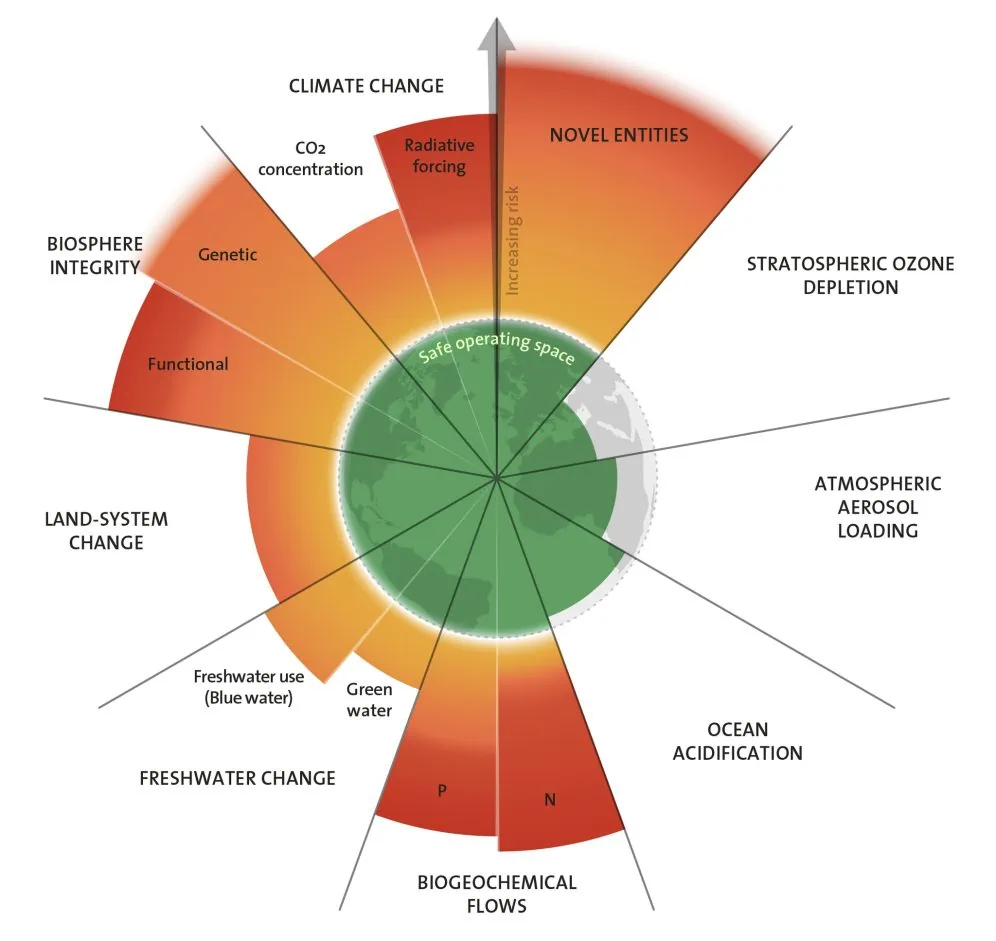Adapting and Making the World Sustainable Again
Strategic Foresight, Early Warning and Geopolitics Serve the Future
Planetary boundaries* are being overstepped. These changes are fundamentally upsetting our world. These mutations are here to last, spread and increase.
We must act now. We must prepare to adapt to the myriad of alterations taking place in all areas. We must be creative to design new solutions to make the world sustainable again.
We put all our expertise at the service of these objectives.
In this section of the think tank, we develop an experimental approach to address all the issues related to the environment, climate change and geopolitics, or more broadly national and international security.**
We want this new initiative to be geared towards action and towards changing mindsets.
If you want to participate in making the world sustainable again, while enhancing your preparedness, join us by becoming a partner of this project: Contact us.
Categories are being reorganised. In the meantime…
French translations: Only recent articles are human translations. We gradually review the automatic translation (DeepL) of the remaining 600 plus articles…
>> To Think-Tank Page
The Present and The Future
Following the seminal works by Johan Rockström of the Stockholm Resilience Center et al. on planetary boundaries*, by Thomas Homer Dixon*** and many others, as well as our own findings over the last fifteen years, we have organised this new project through two approaches.



Each perspective corresponds to a way to understand a world that considers climate change and planetary boundaries.

The Present and Near Future
Planetary boundaries and impacts
The first approach is – relatively – classical. It starts from planetary boundaries. That system is powerful and extremely valuable, not least because each boundary is measurable and can be monitored.
This frame of reference is a way to categorise and order our comprehension of and knowledge about the world that corresponds to the past and the present. It is how we think the world currently. It allows orientation and action without upsetting too much the categories to which we are used.
The translation of the overstepping of planetary boundaries into impacts relevant to human societies needs to be further developed. This is what we shall endeavour here, within our field of expertise.

Further into the Future
Blueprint for a different world
The second perspective is located further into future, notably in terms of mindset.
It seeks to find a different way to look at our world, as we integrate a blueprint for our planet (and beyond) where planetary boundaries are being overstepped. Its focus is on national and international security and geopolitics, as these will be determining features of this new world.
The objective is to find a better way to understand this new world for adaptation and action.
This approach is innovative and in the making.
The Present and Near Future
Approach through Planetary Boundaries, Impacts and Geopolitics
As the project progresses, access the articles in this section by “planetary boundary”

Energy security (links to land-system change and biogeochemical cycles)
(Not initially part of planetary boundaries, but key)

Climate Change and security, stratospheric and atmospheric changes (incl. Environmental geostrategy)

Oceans (acidification and use, links to biogeochemical cycles)

Biosphere integrity (links to land-system change and biogeochemical cycles)
If you want to participate in making the world sustainable again, while enhancing your preparedness, join us by becoming a partner of this project: Contact us.
Subscribe to our newsletter to follow developments.
(from left to right) Photos by Pixabay, Pixabay, Ralph W. Lambrecht (Pexels), Lukas Rodriguez (Pexels), Roger Brown (Pexels), Pixabay.
Further into the Future
An experimental blueprint to understand how to live on our planet, where planetary boundaries are being overstepped, and beyond.
As the project progresses, access the articles in this section by types of political and geopolitical stakes.

Rising physical impacts on (national) governance capabilities
This section will consider the impacts of the overstepping of planetary boundaries domestically and on the capabilities to govern of each political authority. For example, we shall look at crises, emergencies, fires, floods, etc.

Rising physical impacts with geopolitical stakes
This section will focus on the physical impacts of the overstepping of planetary boundaries on geopolitics and the international world. It will interact with the previous section in as much as capabilities of each state are affected. For example, we shall classically look at transnational conflicts related to fresh water issues. We shall also address the appearance of new spaces of competition such as the Arctic, among others.

Responses, possible consequences and political and geopolitical stakes
This section will focus on the responses that need to be created an implemented to face the overstepping of planetary boundaries and their impacts. It will address novel approaches being put forward, the making of new norms, the efforts at adaptation, creation and implementation. It will also look at the consequences of these efforts and at the novel interactions that they will generate, from cooperation to tension. As in the previous section, we shall also address the appearance of new zones and types of environments (for humanity), where human activity will need to expand, what we also called extreme environments.
If you want to participate in making the world sustainable again, while enhancing your preparedness, join us by becoming a partner of this project: Contact us.
Subscribe to our newsletter to follow developments.
(from left to right) Photos and Art Design by Hernan Pauccara (Pexels), Pixabay, Yaroslav Shuraev (Pexels).
*Planetary boundaries: the idea and concept were developed in 2009 as “Johan Rockström led a group of 28 internationally renowned scientists to identify the nine processes that regulate the stability and resilience of the Earth system” – see Stockholm Resilience Center, “Planetary boundaries“. On that page you will find a list of updated publications. See also, for an updated paper, Steffen et al., “The nine planetary boundaries“, Stockholm Resilience Center, 2015.
In France, Aurélien Boutaud and Natacha Gondran recently contextualised and presented the idea to decision-makers and the larger public with Les limites planétaires (La Découverte, 2020).
**It builds on and follows from our contribution to Alterre-Bourgogne Franche Comté day, first panel: Hélène Lavoix, “Unsustainability, Planetary Boundaries and Geopolitical Stakes”, 21 January 2022.
***Thomas Homer Dixon, The Upside of Down: Catastrophe, Creativity, and the Renewal of Civilization (Random House Canada, 2006).




